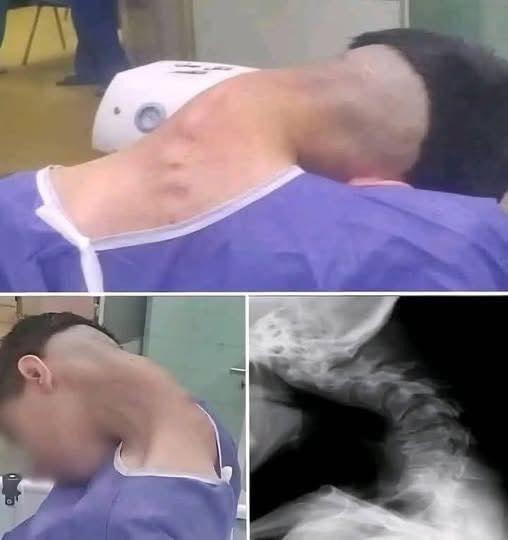
In September 2022, an 18-year-old laborer in India suffered a fatal and medically unprecedented cervical spine injury when a heavy metal object struck the front of his head at work. The injury, detailed in the Journal of Orthopaedic Case Reports, led to his death within 48 hours and revealed a spinal fracture pattern that defies current medical classification systems.
The incident occurred during an ordinary workday, when a large pipe or beam fell directly on the young man’s forehead. The impact caused immediate unconsciousness, respiratory failure, and hemodynamic instability. Emergency services responded swiftly with intubation and cervical support, but despite rapid medical care, the trauma proved too severe.
A CT scan revealed a unique and devastating injury: the C5 vertebral body was retropulsed—crushed and pushed backward into the spinal canal—while C6 had a secondary fracture. Surprisingly, the facet joints and pedicles were intact, creating a “nutcracker-like” compression that severely damaged the spinal cord.
This injury didn’t fit any known classification system, such as Allen & Ferguson, SLIC-S, or AO Spine. It exposed a critical gap in current diagnostic tools and emphasized the need for more adaptable models that account for rare trauma patterns caused by direct vertical compression.
Biomechanically, the force from the frontal blow was transmitted axially through the cervical spine, forcing C5 to absorb the shock. Unlike common side-impact or hyperflexion injuries, this was a rare vertical compression case that rapidly compromised the victim’s neurological and respiratory systems.
Beyond medicine, this case underscores the importance of rigorous workplace safety. It serves as a reminder that even brief lapses in safety protocols—like unsecured overhead loads—can have fatal consequences. Ultimately, it’s a call to action for better safety practices, broader diagnostic awareness, and preventive measures to protect workers everywhere.





